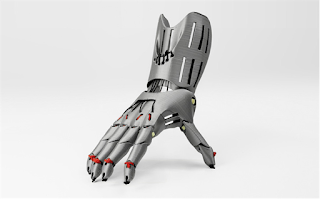The recent ubiquity of 3D printers and innovations in prosthetic design, manufacturing and distribution offer a viable solution for the millions of people living with limb loss around the world. In the United States alone, close to 200,000 amputations are performed each year, yet, with prostheticspriced from $5,000-$50,000, having one can almost be considered a luxury.
Traditionally, the process of getting a prosthetic limb can take anywhere from weeks to months. Because prosthetics are such personal items, each one has to (or should) be custom-made or fit to the needs of the wearer. However, as 3D printers become more affordable, with some available for less than $200, the possibility of anyone being able to design and print a prosthetic limb in their home or local community is rapidly becoming a reality.
To fully appreciate the cost of prosthetic limbs, we can look at the economics of a family with a child in need. On average, each prosthetic has a lifespan of five years, and when considering younger children who are growing every day and are prone to breaking things, more frequent replacements are required.
Once you calculate the price of the prosthetic and its subsequent replacements, the total lifetime cost could place a considerable amount of strain on a family’s finances. Not to mention, it is also almost impossible to get insurance companies to cover that cost annually — CNN recently reported a new Medicare proposal that would limit access to limbs (currently, there are 150,000 amputees in the system).
The democratization of prosthetic design and creation through 3D printing enables millions of people around the world to reap the benefits of the newly popularized manufacturing technology. Open-source initiatives such as The Enable Community Foundation let anyone with a 3D printer customize and create a prosthetic hand. Those on the Enable team, a global network of passionate volunteers, are using 3D printing to give the world a helping hand, and it only costs $50.
With 3D printing, kids can create a prosthetic based on their needs, such as an extendable arm that allows him or her to reach down effortlessly to pick up items off the floor. Akin to printing a document, printing a prosthetic is quickly becoming as easy as pressing “print” and watching the 3D printer build layer upon layer.
In the near future, prosthetics will be seamlessly integrated into people’s everyday lives with minimal effort. New 3D scanning and body modeling technologies from companies such as Body Labsenable people to 3D scan their limbs and haveprosthetics modeled after them, making for more natural fitting and appearance.
Technological developments from innovators such as Hugh Herr of MIT have introduced new abilities, including propulsion systems, integrated sensors and sophisticated algorithms that work together to automate more natural joint movement. The development of predictive movement for prosthetics will make it so people won’t have to think hard about controlling the device. Soon, prosthetics will move with more fluidity to mimic natural movement, and people will be able to control them in part with their brains and bodies through direct natural touch input systems.
Furthermore, 3D printers are becoming compatible with many new materials, like lightweight titanium, increasing durability and strength. Prosthetics will also become more comfortable by using multi-material 3D printing methods to create more natural sockets that better interface with the human body. Imagine if wearing a prosthetic felt like wearing that horribly uncomfortable pair of shoes that now lives in the back of your closet…

No comments:
Post a Comment